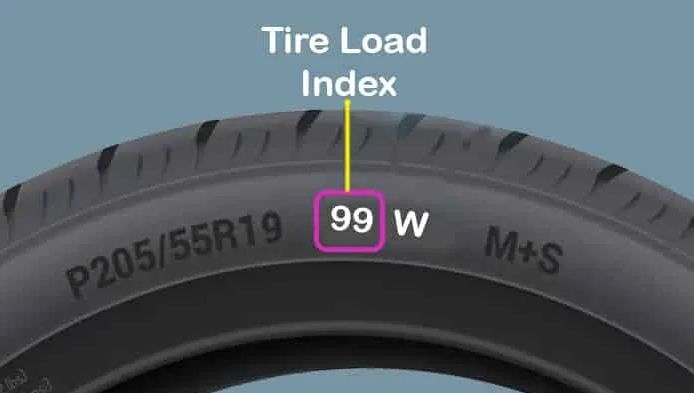Tires are the unsung heroes of every vehicle, bearing the load of your car and keeping you safe on the road. Among the various technical details stamped on a tire’s sidewall, one of the most critical is the tire speed rating. But what does it mean, and why should you care? Tire speed ratings indicate the maximum speed a tire can sustain under optimal conditions without compromising performance. For instance, a tire with an “H” speed rating is designed for speeds up to 130 mph (210 kph).
The speed rating doesn’t suggest you should drive at that speed; instead, it indicates the tire’s capability. The rating is determined under controlled laboratory conditions with ideal tire inflation, balanced loads, and perfect road surfaces. However, real-world factors like weather, road conditions, and vehicle maintenance can impact performance, so the rating is more of a guideline than a strict rule.
Where to Find Your Tire Speed Rating
- On the Tire Sidewall: Look at the sequence of numbers and letters on the side of your tire. For example: P205/60R16 82H. Here, “H” is the speed rating.
- In Your Vehicle’s Manual: The manufacturer’s recommended tire specifications, including speed ratings, are detailed in the owner’s manual.
- Driver’s Side Door Jamb or Glove Box: These areas often have stickers listing the recommended tire size and speed rating.
How are Speed Ratings Determined?
Speed ratings are assigned through standardized laboratory testing. During the test, tires are mounted on a special drum that simulates road conditions and are progressively run at higher speeds for extended periods under strict conditions. The goal is to see if the tire can sustain its integrity, grip, and performance without failure.
These tests don’t account for poor road surfaces, improper tire inflation, or wear and tear from prolonged use.
Understanding the Tire Speed Rating System
The system uses letters from A to Z, with each letter corresponding to a specific maximum speed. Generally, higher letters represent higher speeds, but there are quirks.
For example, the “H” rating falls between “U” and “V” rather than following “G.” Historically, “H” stood for “high performance.” Some letters, like “I” and “O,” aren’t used. Newer ratings such as “W” and “Y” were added for ultra-high-performance tires.
Here’s a breakdown of the most common speed ratings:
Speed Rating T: With a maximum speed of 118 mph, you usually find tires with speed rating “T” on family sedans and minivans.
Speed Rating H: If you recall from earlier, the “H” speed rating doesn’t appear after “G” but between “U” and “V.” It represents a maximum speed of 130 mph and is commonly found on sports sedans and coupes. In earlier incarnations of the speed rating system, “H” stood for “high performance,” which is why it maintains an unusual position in the speed rating spectrum today.
Speed Rating V: Once the highest speed rating a tire could have, “V” used to represent a maximum of 149 mph or more. Nowadays, it means 149 mph but no higher.
Speed Rating W: A relatively new addition to the speed rating chart, tires with speed rating “W” can achieve a maximum sustained speed of 168 mph.
Speed Rating Z: A “Z” rating can mean different things. While it nearly always means a high-performance tire for high-performing sports cars, “Z” may actually appear in the middle of a tire’s size information. When it does, it represents either a maximum speed of more than 149 mph or 186 mph. Which of those speeds it refers to will depend on the specific tire. Contact the manufacturer to get details on any Z-rated tires.
Always choose the speed rating that corresponds to your vehicle manufacturer’s specifications, and be sure all four tires have the same rating. Speed ratings are based on laboratory tests under specific, controlled conditions. While these tests relate to performance on the road under those conditions, real-life driving is rarely identical to test conditions.
Why Speed Ratings Matter
- Safety: Using tires with a speed rating lower than your vehicle’s specification can lead to overheating, reduced grip, and potential tire failure at high speeds.
- Performance: Higher speed-rated tires often provide better handling and responsiveness.
- Longevity: While higher-rated tires tend to be more durable at higher speeds, they may wear out faster due to softer rubber compounds designed for performance.
Choosing the Right Tire Speed Rating
Follow Manufacturer Recommendations: Always adhere to the speed rating specified in your vehicle’s manual. Mismatched ratings across tires can affect stability and safety.
Consider Your Driving Habits: If you rarely exceed 70 mph, you might not need a high-speed rating. But if you drive a sports car or frequently travel on highways, sticking to higher ratings is a wise choice.
Your tire speed rating is more than just a number; it’s a critical factor in ensuring your safety, performance, and driving enjoyment. By understanding what these ratings mean and adhering to the manufacturer’s guidelines, you can make informed choices and keep your ride smooth and secure.
Always remember: just because your tire is rated for 150 mph doesn’t mean you should push it to the limit—especially in real-world conditions. Safe driving always comes first!
